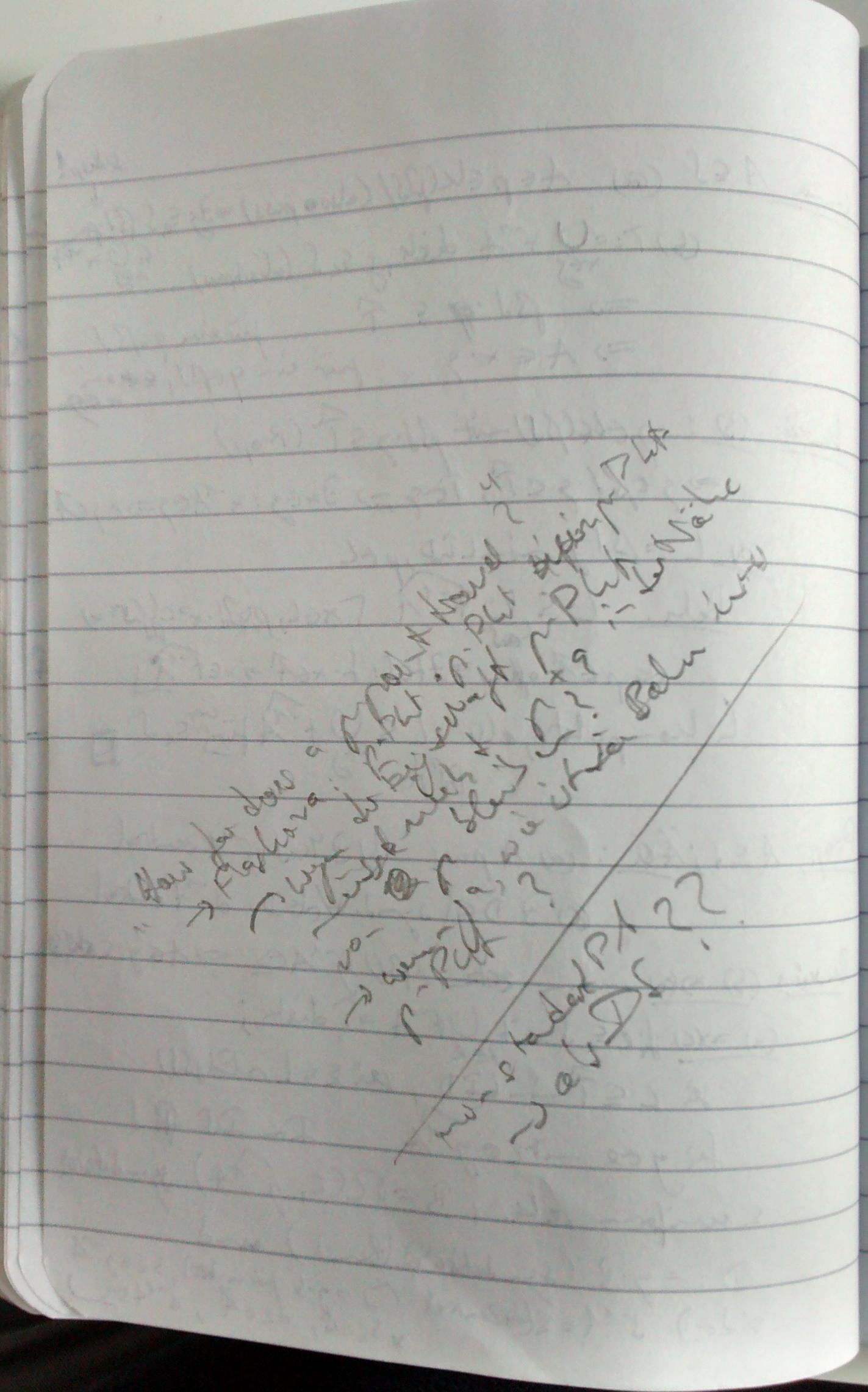Red workbook, p9
Source

Transcript
- "How far does a p-point travel?"
Flaskova: p-Pkt ⋅ p-Pkt kein p-Pkt Wegen der Eigenschaft p-Pkt muesste nicht in der Naehe von bleiben? wenn ja, wie ist die Bahn einese p-Pkt?
- non-standards PA
als DS??
partial Translation
- "How far does a p-point travel?"
Flašková: p-point ⋅ p-point (the product of two p-points) is not a p-point. Due to the properties of a p-point, shouldn't somehow be "close" to ? if so, what is the orbit of a p-point?
- Can non-standard [models of] PA
[be considered] as dynamical system?
Notes
Finally, a first note that is not some lecture note but (almost) a note on research. Not that it's particularly meaningful or even sensible. In fact, it's rather mysterious to me. At first I thought the background lies at TOPOSYM (which I visited during the summer), where Jana Flašková talked about P-points. But looking back at my notes on her talk (in the red workbook but not published here), I don't think this really fits (but I might be wrong).
Open Problems
- What can we say about
for a P-point ? - What can we say about (the closure of) subsemigroup generated by
?